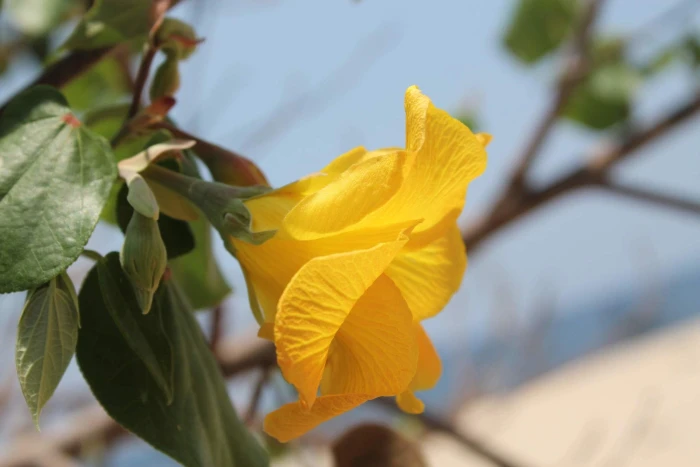Pernambuco Cotton Tree
(Talipariti pernambucense)
Pernambuco Cotton Tree (Talipariti pernambucense)
/
/

Viacheslav Shalisko
CC BY 4.0
Image By:
Viacheslav Shalisko
Recorded By:
Copyright:
CC BY 4.0
Copyright Notice:
Photo by: Viacheslav Shalisko | License Type: CC BY 4.0 | License URL: http://creativecommons.org/licenses/by/4.0/ | Rights Holder: Viacheslav Shalisko | Publisher: iNaturalist | Date Created: 2018-07-21T14:00:01-07:00 |



















Estimated Native Range
Climate Requirements for Elizabeth, New Jersey
| This Plant | Your Site | Plant Suitability for Your Location | ||
|---|---|---|---|---|
| • Precipitation | 3" - 256" | 49" | Aquatic | Aquatic |
| • High Temp. | -64°F - 107°F | 87°F | Your summer temperatures are normal for this plant. | Excellent |
| • Low Temp. | -82°F - 74°F | 22°F | Your winter temperatures are normal for this plant | Excellent |
This plant should grow well at your location with about N inches per year (Y minutes per month) of irrigation.
Summary
Talipariti pernambucense, commonly known as the Pernambuco Cotton Tree, is a deciduous tree native to the tropical Americas, particularly thriving in the coastal tropical rainforest regions. This species typically reaches a height of 10-15 meters with a canopy spread of 5-10 meters. The Pernambuco Cotton Tree is characterized by its straight trunk, broad crown, and dense foliage. It produces showy, hibiscus-like flowers that are bright yellow with a deep red center, blooming throughout the year in its native range, with peaks during warmer months. The bark is smooth and light gray, and the tree bears fruit in the form of capsules containing seeds with cotton-like fibers.
The Pernambuco Cotton Tree is valued for its ornamental flowers and is used in tropical and subtropical landscapes. It is suitable for urban planting due to its moderate size and attractive appearance. In cultivation, it requires full sun to partial shade, consistent moisture, and well-drained soils. It is not tolerant of frost and prefers a warm climate. While not widely known for its medicinal or culinary uses, the fibers from the seeds have been used traditionally for stuffing pillows and mattresses. Gardeners should be aware that this tree can be susceptible to root rot if overwatered or planted in poorly drained soils. It is not known to be invasive outside its native range, but as with any non-native species, care should be taken to monitor its growth and spread.CC BY-SA 4.0
The Pernambuco Cotton Tree is valued for its ornamental flowers and is used in tropical and subtropical landscapes. It is suitable for urban planting due to its moderate size and attractive appearance. In cultivation, it requires full sun to partial shade, consistent moisture, and well-drained soils. It is not tolerant of frost and prefers a warm climate. While not widely known for its medicinal or culinary uses, the fibers from the seeds have been used traditionally for stuffing pillows and mattresses. Gardeners should be aware that this tree can be susceptible to root rot if overwatered or planted in poorly drained soils. It is not known to be invasive outside its native range, but as with any non-native species, care should be taken to monitor its growth and spread.CC BY-SA 4.0
Plant Description
- Plant Type: Trees
- Height: 20-40 feet
- Width: 20-30 feet
- Growth Rate: Moderate
- Flower Color: Yellow
- Flowering Season: Summer
- Leaf Retention: Evergreen
Growth Requirements
- Sun: Full Sun, Part Shade
- Water: Medium
- Drainage: Medium
Common Uses
Natural Habitat
Native to the coastal rainforest regions of the tropical Americas
Other Names
Common Names: Bois Liege , Coton Mahaut , Coton Marron , Damajagua , Emajagua , Grand Mahaut , Grand Mahot , Mahaut
Scientific Names: Talipariti pernambucense , Azanza insignis , Hibiscus abutiloides , Hibiscus arboreus , Hibiscus arboreus , Hibiscus azanzae , Hibiscus bracteosus , Hibiscus fragrantissimus , Hibiscus pernambucensis , Hibiscus pernambucensis
GBIF Accepted Name: Talipariti pernambucense